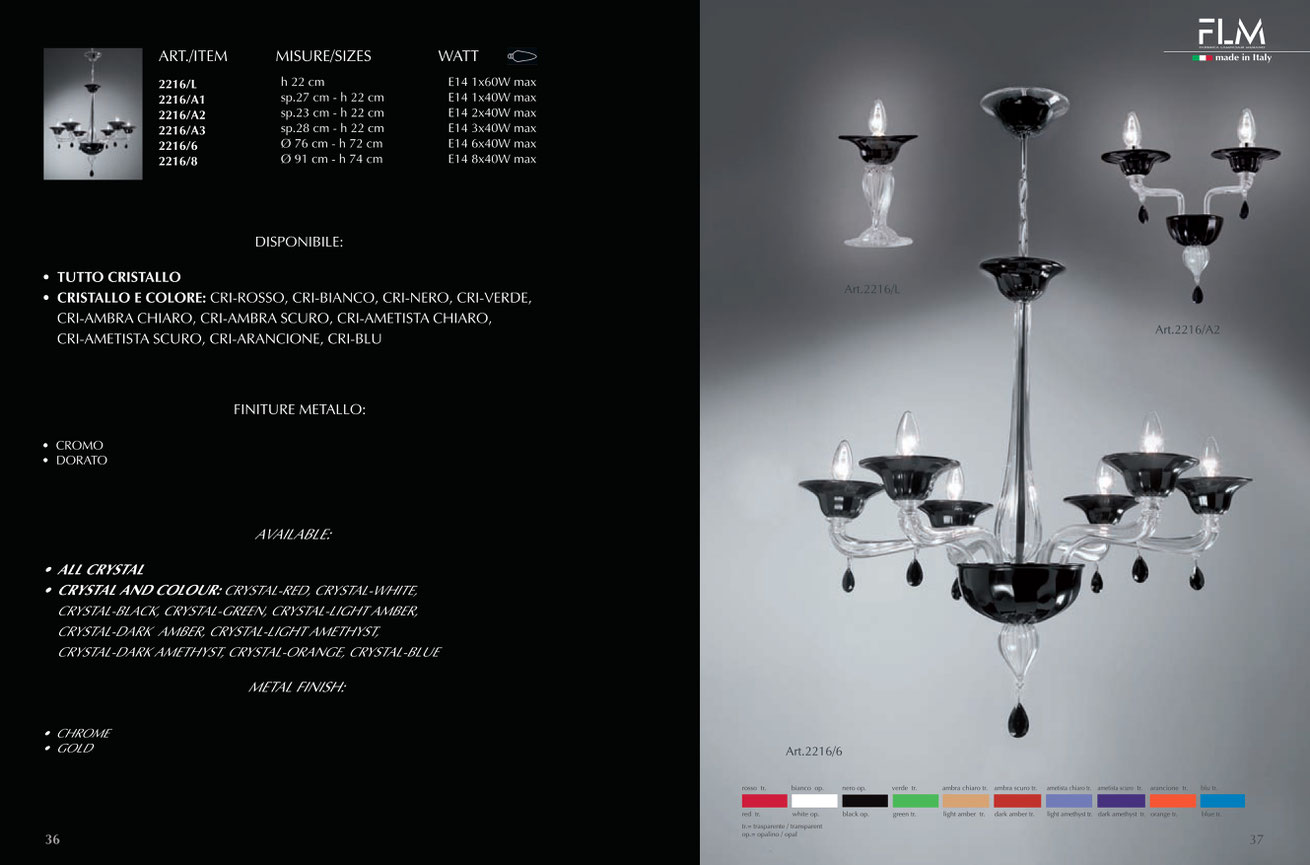Originating in Middle Eastern countries such as Syria, Egypt and Palestine, glass craftsmanship was later introduced to the province of Venice and many countries on the European continent. In the hands of talented Venetian artisans, this new craft of glass blossomed into a magnificent art form that would dazzle and conquer the whole world with its beauty.
Although glass was not an entirely new material to the Romans, it was the glassblowing technology acquired from the Middle Eastern peoples that enabled them to lay the foundations of Venetian glassmaking. Because Venice was an overcrowded city in the 9th century, with many buildings constructed exclusively of wood, the glassmakers, and especially the furnaces, were soon forced to move to Murano, Murano, a small island not far from the mainland.

Some historians perceive this exile as a form of strategic control, considering that it was much easier for the authorities to pull the strings of the glass craft once it was contained on a small island. With glass production in Murano subjected to strict regulations and close monitoring by government authorities, the craft steadily grew into a profitable industry, and the trade secrets of Murano's glass masters never reached the ears of other competing countries.
The large concentration of skilled craftsmen in such a small area contributed greatly to the development and refinement of Murano glass art and facilitated the exchange of creative ideas. Murano glass was slowly evolving into something very large, which would reach its full potential between the 15th and 16th centuries, when the glass artifacts produced on the island of Murano rivaled the rest of the world's Venetiananiezian artifacts and mirrors in terms of beauty and craftsmanship. For all intents and purposes, Murano had become so important and popular that it received constant visits from prominent world figures such as kings, popes, and elite merchants, attracted by what was considered the most fashionable range of handmade glass products and the pinnacle of glassmaking technology.
After a bicentennial dominance over other powerful competing markets, Murano's glassmaking art would suffer a noticeable decline during the 18th century, when the country's political downfall also had a pronounced impact on glass craftsmanship. The glass industry could no longer be efficiently controlled, and the country's economic instability led to the closure of many workshops, leaving a large number of artisans out of work. For the already struggling province of Venice, the French and Austrian invasions in the latter part of the century represented the final nail in the coffin of its glassmaking trade, and with no help to cling to, Murano's glass craft sank with it.
However, just like a phoenix rising from its own ashes, Murano's glassmaking art rose again at the dawn of the 19th century, when foreign occupation disappeared and Italy began its economic and industrial recovery. In the decades that followed, Murano's traditional glass art would be taken to the heights of its former glory and beyond, expanding the ramifications of its world-famous glassmaking industry and introducing innovative new techniques to the industry. This period of innovation and prosperity continues to this day, with the world-famous and desired line of Murano glass





